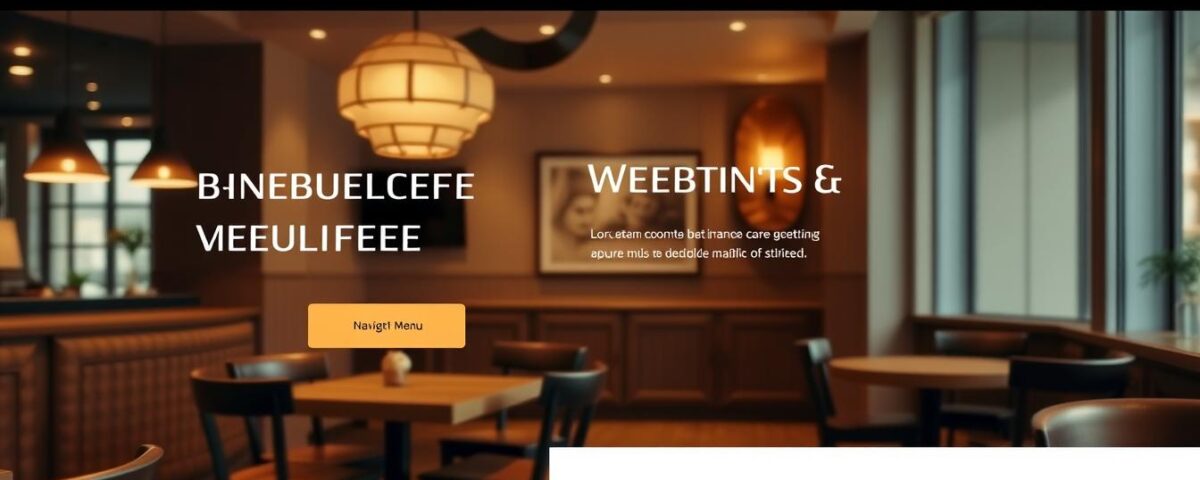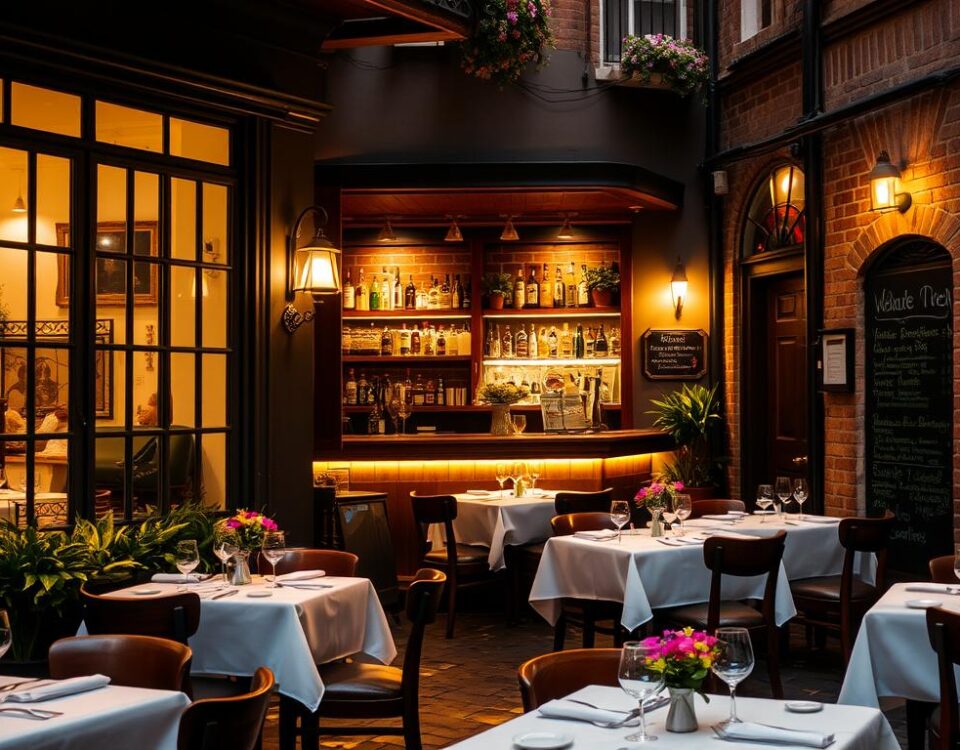
Restaurant Loyalty Hacks That Drive 25% More Repeat Business
August 28, 2025
How to Capitalize on 2025 Restaurant Trends Before Competitors Do
August 29, 2025Imagine being able to attract more customers to your restaurant without breaking the bank on complicated web development. I recently met a small business owner who managed to create a stunning website in just a day, without writing a single line of code.
Did you know that 80% of consumers research online before making a dining decision? This statistic highlights the importance of having a professional online presence for your restaurant. By the end of this guide, you’ll have a fully functional site that showcases your menu and attracts new customers.
I’ll walk you through the simple process of creating a website in just one day, using easy-to-follow steps and user-friendly tools. Are you ready to take your restaurant to the next level with a professional online presence?
Key Takeaways
- Create a professional restaurant website in just one day without coding.
- Learn why a dedicated website is crucial for your restaurant’s success.
- Discover insider tips on choosing the right tools and platforms for website setup.
- Understand how to promote your new site to attract more customers.
- Get a fully functional website that showcases your menu and increases revenue.
Why Your Restaurant Needs a Website in 2023
As we navigate the ever-evolving digital landscape, a restaurant website has become an indispensable tool for success. The way customers interact with restaurants has changed dramatically, with a significant shift towards online research and engagement.
The Digital Dining Revolution
The restaurant industry has undergone a massive digital transformation. Over 80% of diners now check a restaurant’s website before deciding to visit. This shift is driven by the convenience and accessibility of online information, allowing customers to make informed decisions about their dining experience.
In 2023, third-party platforms dominate the market, but having your own website gives you control over your brand presentation and customer interaction. It’s essential for restaurants to establish their own online identity through a dedicated website.
Key Benefits of Having Your Own Restaurant Website
Having your own restaurant website offers numerous benefits. It provides complete control over your brand presentation, customer experience, and digital marketing strategy. A professional website builds credibility and trust with potential customers who are researching dining options online.
- A website serves as a 24/7 marketing tool, working even when your physical location is closed.
- It provides an uninterrupted space to tell your restaurant’s unique story, unlike social media platforms where your content competes with others.
- By having your own website, you can reduce dependency on third-party delivery services, potentially increasing your profit margins.
By embracing the digital dining revolution and creating a restaurant website, you can enhance your business and stay competitive in the market. This not only improves your online presence but also caters to the modern diner’s expectations, including updated menus, hours, and online ordering options.
Understanding Your Restaurant Website Goals
To build an effective restaurant website, you need to start by understanding your business objectives. This foundational step ensures that your website serves a clear purpose and meets the needs of your target audience.
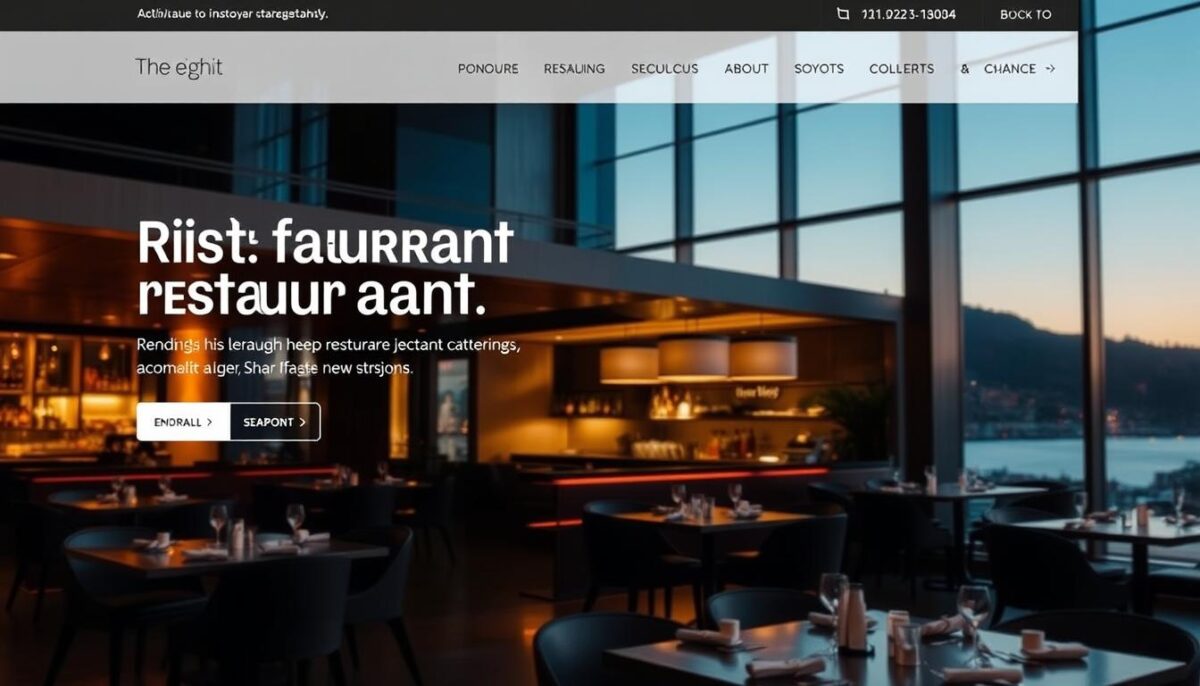
Defining Your Primary Website Objectives
Before diving into website creation, it’s crucial to clarify exactly what you want your restaurant website to accomplish for your business. Are you looking to increase reservations, boost takeout orders, or simply provide information about your restaurant? Setting clear objectives is essential to creating a focused and effective online presence.
- Identify your primary goals, such as increasing customer engagement or driving sales.
- Align your website goals with your broader business strategy.
- Address specific pain points in your current customer acquisition process.
Identifying Your Target Audience
Understanding your target audience is vital to creating a website that resonates with them. This involves identifying your ideal customer demographics, including age, income level, dining preferences, and digital habits.
- Different audience segments have different priorities, such as quick online ordering for business professionals or menu variety for families.
- Tailor your website’s design, content, and functionality to meet the specific needs and expectations of your target audience.
- Use appropriate imagery, language, and features that speak directly to your ideal customers.
By precisely defining your website goals and understanding your target audience, you can create a more effective restaurant website that enhances your online presence and drives business success.
Choosing the Right Website Building Approach
Creating a restaurant website can be done in multiple ways, each with its pros and cons. When deciding on the best approach, it’s essential to consider your technical expertise, budget, and the specific features your restaurant needs.
DIY Website Builders vs. Hiring Professionals
DIY website builders like Wix or Squarespace offer user-friendly interfaces that allow you to create a basic website without technical skills. However, they may require additional plugins for restaurant-specific features. On the other hand, hiring professionals provides a completely custom solution but typically costs $1,000-$5,000+ and takes weeks or months to complete.
For most independent restaurants looking to launch quickly, specialized restaurant website builders offer the best balance of functionality, cost, and speed. These builders come with built-in tools designed specifically for the food industry, including menu management, online ordering, and reservation systems.
Cost Comparison of Different Options
The cost of creating a website for your restaurant varies significantly depending on the approach. DIY website builders can be cost-effective, with plans starting at around $10-$30 per month. Specialized restaurant website builders can cost between $49-$169 per month but include hosting, maintenance, and restaurant-specific features.
Hiring professionals, while offering a custom solution, involves higher upfront costs and ongoing maintenance fees. It’s crucial to consider not just the initial setup cost but also ongoing expenses when choosing the right website builder for your restaurant.
In conclusion, the right website building approach depends on your technical comfort level, budget constraints, and specific feature requirements for your restaurant website. By understanding the advantages and limitations of each option, you can make an informed decision that suits your needs.
Selecting a Restaurant Website Builder

The success of your restaurant’s website depends heavily on the website builder you choose. With so many options available, it’s essential to select a platform that aligns with your business needs.
Top Website Builders for Restaurants
Some of the top website builders for restaurants include UpMenu, GloriaFood, and BentoBox. Each of these platforms has its unique strengths and specializations. For instance, UpMenu offers a built-in online ordering system, making it an excellent choice for restaurants that want to maximize revenue and reduce dependency on third-party delivery platforms.
When evaluating these website builders, consider your primary business model. Whether you’re focused on dine-in, takeout, delivery, or a combination, the ideal builder should support your operations.
Essential Features to Look For
When selecting a website builder, look for essential features such as menu management tools, mobile responsiveness, and integration capabilities with your existing point-of-sale system. A good restaurant website should also have customizable templates designed specifically for your type of restaurant.
Additionally, consider the level of customer support provided by the builder. Some offer free setup services or dedicated support teams, which can be invaluable if you’re not technically inclined.
The right website builder should grow with your business, offering scalable features that can be activated as your needs evolve. Most restaurant-specific website builders offer free trials, allowing you to test their interfaces and features before committing to a monthly subscription.
Securing Your Domain Name and Hosting
A domain name is more than just a web address; it’s a key part of your restaurant’s brand identity. When customers visit your site, they need to be able to remember your domain name easily. This is crucial for building a loyal customer base and driving repeat business.
How to Choose a Memorable Restaurant Domain
Choosing the right domain name involves several considerations. Here are some key factors to keep in mind:
- Ideally, your domain name should reflect your restaurant’s name and be easy to spell.
- Avoid using hyphens or numbers, as they can be easily forgotten.
- Consider including your cuisine type or location to improve searchability.
- Opt for a .com extension if possible, as it’s the most recognized and trusted.
For example, a restaurant named “Town Pizza” in New York could benefit from a domain like www.TownPizzaNY.com, which combines the restaurant’s name, location, and cuisine type.
Connecting Your Domain to Your Website Builder
Once you’ve secured your domain name, the next step is to connect it to your chosen website builder. This process typically takes less than 24 hours and involves configuring DNS settings. Most restaurant website builders offer simple tools to make this process straightforward, even for those without technical expertise.
To summarize, securing your domain name and hosting is a critical step in launching your restaurant website. By choosing a memorable domain and connecting it to your website builder, you set the foundation for a successful online presence.
Planning Your Restaurant Website Structure
Creating a well-structured restaurant website is crucial for attracting and retaining customers in today’s digital age. A logical website structure guides visitors toward the information they’re seeking and ultimately toward conversion actions like making reservations or placing orders.
Your restaurant’s website sitemap should reflect your business’s services, goals, and mission, helping you connect with your customers. To achieve this, it’s essential to identify the key pages that every restaurant website needs.
Essential Pages Every Restaurant Website Needs
Every effective restaurant website requires certain essential pages to provide a comprehensive user experience. These include:
- A compelling homepage that showcases your restaurant’s unique identity
- An easily accessible menu page with clear categories and descriptions
- A clear contact page with location, hours, and contact information
- An about page that tells your restaurant’s story and mission
- Functionality for online ordering or reservations, if applicable
By prioritizing these essential pages, you can ensure that your website structure meets the needs of your visitors. Your menu, location, hours, and ordering options should be easily accessible, as these are the primary pieces of information that visitors are looking for.
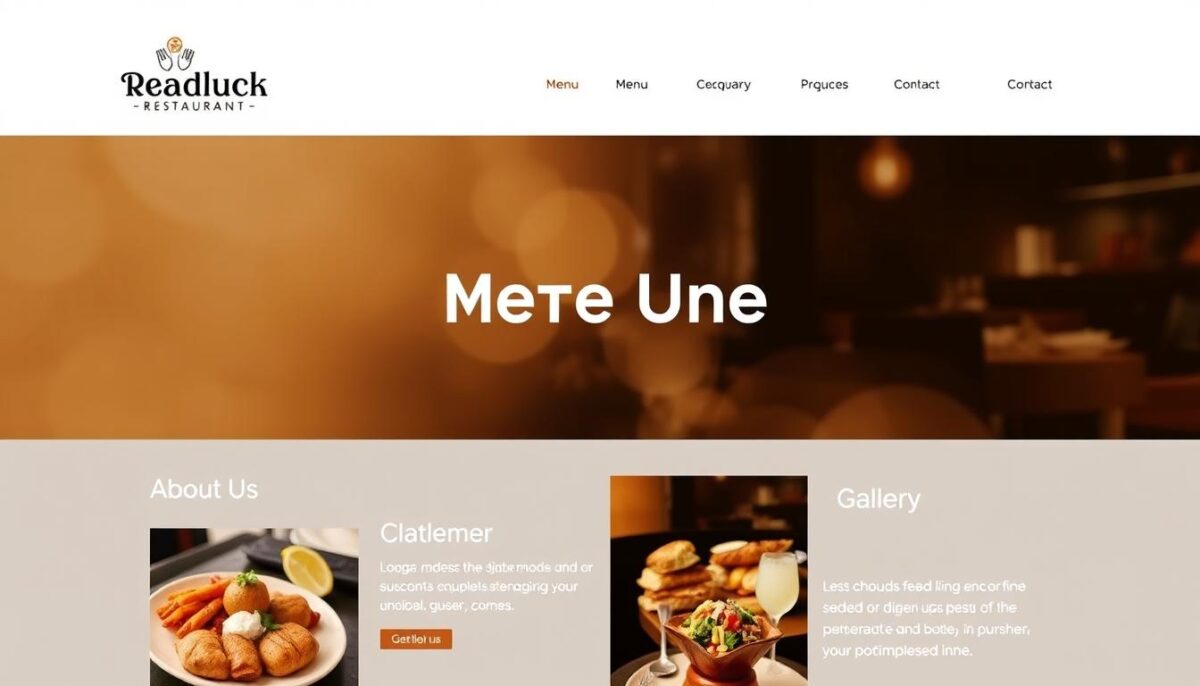
Creating an Effective Navigation Menu
An intuitive navigation menu is critical for helping visitors find what they need within 1-2 clicks, preventing frustration and abandoned visits. To achieve this, your navigation menu should be consistent across all pages and prominently feature your most important conversion actions, such as “Order Online” or “Reserve a Table” buttons.
Additionally, your contact information, including your address, phone number, and hours of operation, should be easily accessible from every page, either in the navigation menu or in the website footer. By organizing your menu page with clear categories, descriptions, and prices, you can create a seamless user experience that showcases your restaurant’s offerings.
For restaurants with extensive menus, it’s essential to create a structure that prevents overwhelming visitors while still showcasing your full offerings. Your website structure should also account for mobile users, who often have different priorities than desktop users, such as quick access to ordering or directions.
Designing Your Restaurant Website for Brand Impact
A well-designed restaurant website is crucial for creating a lasting impression on potential customers. Just as the ambiance and menu of your physical restaurant contribute to the overall dining experience, your website’s design should reflect your brand’s identity and cater to your customers’ needs.
Choosing Colors, Fonts, and Visual Elements
Selecting the right visual elements for your restaurant website is vital for creating an immediate emotional connection with visitors. This includes choosing a color palette that aligns with your brand identity. For instance, a family trattoria might opt for warm, inviting tones, while a high-end steakhouse might prefer sleek, sophisticated colors.
Typography choices significantly impact your website’s personality. It’s essential to select fonts that are both readable and reflective of your restaurant’s character. Visual consistency across your website builds brand recognition and professionalism. You can maintain this consistency through templates and design systems.
High-quality food photography is non-negotiable for restaurant websites. I’ll provide tips for showcasing your dishes in the most appetizing way, even if you don’t have a professional photographer. For example, consider the following table that highlights key photography tips:
| Photography Tip | Description |
|---|---|
| Use good lighting | Natural light or invest in a lighting kit to make your dishes look appealing |
| Style your dishes | Garnish and arrange food attractively on the plate |
| Experiment with angles | Shoot from different perspectives to add visual interest |
Creating a Mobile-Friendly Design
With over 60% of restaurant website visits coming from smartphones, mobile optimization is crucial. Your design should look great and function perfectly on all device sizes. Mobile users have different priorities than desktop users; they need quick access to your menu, location, hours, and ordering functionality without excessive scrolling or zooming.
Touch-friendly navigation elements with adequately sized buttons and menus are essential for mobile users trying to place orders or make reservations. Page load speed is particularly important for mobile users who may be on slower connections. Optimizing images and design elements for quick loading is vital.
Your website design should guide visitors toward key conversion actions through strategic use of contrasting colors, white space, and directional cues. By doing so, you’ll create a seamless and memorable experience for your customers, ultimately driving more sales and loyalty to your restaurant.
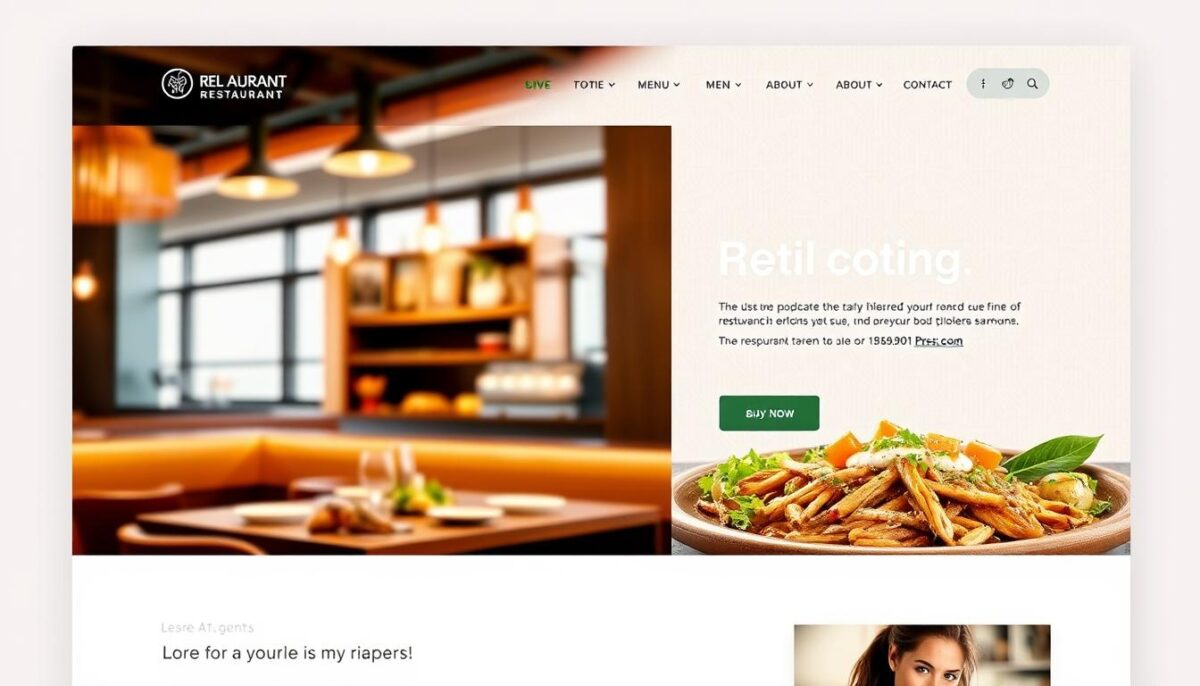
Optimizing Your Restaurant Website for Search Engines
With the right SEO strategies, your restaurant website can rank higher in search engine results. Optimizing your website for search engines is crucial for attracting more customers and increasing your online presence.
Local SEO Strategies for Restaurants
Local SEO is particularly important for restaurants since most customers search for dining options within a specific geographic area. To optimize for location-based searches, you need to focus on creating and optimizing your Google Business Profile.
- Claim and verify your Google Business Profile listing.
- Provide accurate and up-to-date information about your restaurant, including your address, phone number, and hours of operation.
- Use location-specific keywords in your website content, such as “Italian restaurant in [your city]” or “best pizza in [your neighborhood].”
Consistent NAP (Name, Address, Phone number) information across your website and online listings is also crucial for local SEO. Ensuring this consistency will help improve your search engine rankings.
Keyword Optimization for Restaurant Websites
Identifying and incorporating relevant keywords throughout your website is essential for search engine optimization. Focus on terms that potential customers use when searching for restaurants like yours.
Here are some tips for keyword optimization:
| Keyword Type | Examples | Placement |
|---|---|---|
| Cuisine Type | Italian, Mexican, Indian | Menu page, headings |
| Location-Based | [City] restaurant, [Neighborhood] dining | Page titles, content |
| Dish Names | Pizza, Sushi, Tacos | Menu page, content |
Technical SEO elements like meta titles, meta descriptions, and header tags also play a crucial role in search rankings. Ensure that these elements are optimized for each page on your website.
By implementing these SEO strategies, you can improve your restaurant website’s visibility in search engine results, attracting more customers and driving sales.
Testing and Launching Your Website
To ensure your restaurant website provides an optimal user experience, comprehensive testing is essential before launch. This step is crucial in identifying and resolving any issues that could impact your customers’ interaction with your site.
Pre-Launch Checklist
Before going live, it’s vital to run through a thorough pre-launch checklist. This includes testing your website on multiple devices and browsers to ensure consistent functionality and appearance. Key areas to focus on are:
- Functionality of online ordering and reservation systems
- Contact forms and other interactive elements
- Content review for spelling errors, outdated information, and placeholder text
- Technical aspects, such as page loading speed and mobile responsiveness
A detailed table to help you with your pre-launch checklist is provided below:
| Checklist Item | Status | Notes |
|---|---|---|
| Online Ordering System | Functional | No issues found |
| Reservation Forms | Functional | Works as expected |
| Content Review | In Progress | Minor spelling errors found |
Going Live and Announcing Your Website
Once you’ve completed your pre-launch checklist and addressed any issues, it’s time to make your website live. I recommend a “soft launch” where you share your site with friends, family, and loyal customers to gather feedback. After addressing any feedback, announce your new website through social media, email newsletters, and in-restaurant signage. Highlight the benefits of your website, such as easy online ordering and updated menus. Don’t forget to set up website analytics to monitor visitor behavior and improve your site continuously.
Promoting Your New Restaurant Website
Having a website for your restaurant is just the beginning; you need to actively promote it to ensure it’s seen by potential customers. Now that your site is live, it’s crucial to drive traffic to it through various marketing strategies.
Effective Social Media Strategies
Social media is a powerful tool for promoting your restaurant website. Create engaging posts that highlight specific features like your online ordering system or digital menu. Tailor your promotion for different platforms like Facebook, Instagram, and TikTok. Ensure your social media profiles prominently feature your website URL, making it easy for followers to visit your site directly.
In-Restaurant Marketing Tactics
In-restaurant marketing is crucial for driving online engagement. Use table tents, QR codes, receipt messages, and staff recommendations to promote your website to customers who are already dining with you. These tactics can effectively drive customers to your website for future orders or to join your email list.
| Promotion Method | Description | Expected Outcome |
|---|---|---|
| Social Media Posts | Engaging content highlighting website features | Increased website visits |
| Email Marketing | Announcement campaigns to existing customers | Higher engagement and orders |
| In-Restaurant Promotions | Table tents, QR codes, staff recommendations | More customers visiting the website |
By leveraging social media, email marketing, and in-restaurant promotions, you can effectively promote your new restaurant website and attract more customers.
Conclusion
With the right tools and approach, setting up a restaurant website in just one day is not only possible but also highly rewarding. Your website is more than just a digital business card; it’s a powerful marketing tool that can drive reservations, increase online orders, and build lasting relationships with customers.
Remember, your restaurant website should evolve alongside your business. Regular updates to your menu, hours, photos, and special offerings will keep content fresh and accurate. Prioritizing user experience is key, making it easy for customers to find the information they need and complete desired actions.
As you become more comfortable with your website, consider expanding its capabilities with additional features like loyalty programs or SEO optimization to improve visibility. Regularly reviewing your website analytics will help you understand how customers interact with your site, identifying opportunities for improvement.
I encourage you to start implementing these strategies today. Even a basic website is better than no website at all, and you can continuously improve it over time. Your restaurant website is an extension of your physical space, reflecting the same level of care and hospitality that customers experience when dining with you.
FAQ
What are the essential pages that my restaurant website should have?
Every restaurant website needs essential pages like a menu, contact information, about us, and online ordering or reservations. These pages help customers find the information they need and make it easy for them to get in touch or place an order.
How can I optimize my restaurant website for search engines?
To optimize your website for search engines, focus on local SEO strategies like including your restaurant’s name, address, and phone number consistently across the web, and using keywords related to your business and location. You should also ensure your website is mobile-friendly and has fast loading speeds.
Can I integrate online ordering functionality into my website?
Yes, you can integrate online ordering functionality into your website using various website builders and third-party services that specialize in online ordering and delivery management. This allows customers to place orders directly from your website.
How do I choose a memorable domain name for my restaurant?
When choosing a domain name, pick something that’s easy to remember, relevant to your restaurant’s name or brand, and simple to spell. It’s also a good idea to choose a .com domain if available, as it’s the most recognized and trusted top-level domain.
What are the benefits of having a mobile-friendly restaurant website?
A mobile-friendly website ensures that customers can easily navigate and access your menu, contact information, and other important details on their smartphones. This improves their overall experience and increases the chances of them making a reservation or placing an order.
How can I promote my new restaurant website on social media?
To promote your website on social media, share links to your website on your profiles, post engaging content that drives traffic to your site, and use paid advertising options to reach a wider audience. You can also share user-generated content and behind-the-scenes insights to attract and retain followers.
What are some time-saving tips for creating a restaurant website?
To save time when creating your website, use a website builder with templates and drag-and-drop tools, and focus on the most essential pages and features first. You can also repurpose content you already have, like your menu or about page, to get started quickly.
